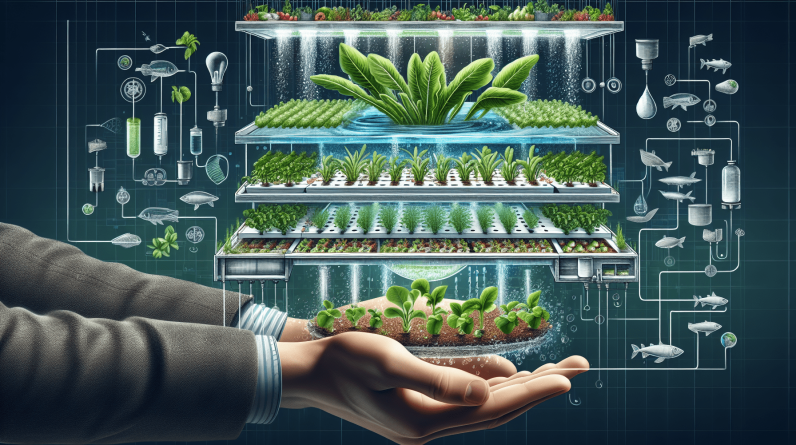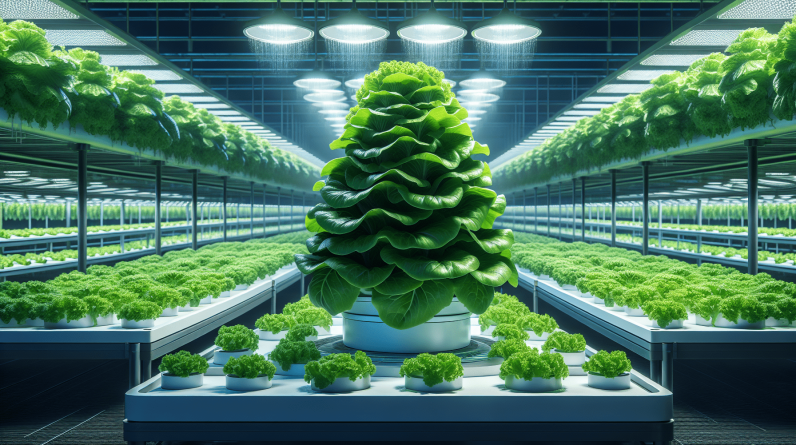
Hydroponic growing systems have gained popularity as a sustainable and efficient method of cultivating fresh and nutritious crops. However, like any other gardening technique, hydroponics come with their own set of challenges that gardeners must address to ensure successful plant growth. In this article, we will explore the common problems that arise in hydroponic systems and provide solutions to help you overcome these issues.

This image is property of pixabay.com.
Nutrient Imbalance
When plants are grown hydroponically, they rely on a nutrient solution to obtain essential minerals for growth. However, maintaining the correct balance of nutrients in the solution can be challenging. Nutrient imbalances can lead to deficiency or toxicity in plants, resulting in stunted growth, poor fruit development, or even plant death.
To prevent nutrient imbalances in your hydroponic system, regularly test the pH and the electrical conductivity (EC) of your nutrient solution using a digital meter. Make adjustments as needed to ensure that your plants are receiving the right amount of nutrients. Additionally, follow a feeding schedule recommended for the specific type of plants you are growing to meet their nutritional requirements.
Symptoms of Nutrient Imbalance
Look out for visual cues that indicate a nutrient imbalance in your plants. Symptoms may include yellow or discolored leaves, stunted growth, leaf burning or spotting, and wilting. By closely monitoring your plants and addressing nutrient deficiencies promptly, you can prevent further damage and promote healthy growth.
Root Rot
Root rot is a common problem in hydroponic systems that occurs when the roots of plants are constantly submerged in water without adequate oxygen. This lack of oxygen creates the perfect environment for harmful pathogens, such as Pythium and Fusarium, to thrive and attack the root system. If left untreated, root rot can lead to wilting, nutrient deficiency, and eventual plant death.
To prevent root rot in your hydroponic system, ensure proper aeration and oxygenation of the root zone. Use an air stone or air pump to oxygenate the nutrient solution, preventing the roots from suffocating. Additionally, maintain a clean and sterile growing environment by regularly sanitizing your equipment and changing the nutrient solution to minimize the risk of pathogen contamination.
Signs of Root Rot
Watch for signs of root rot, such as foul-smelling roots, brown or slimy roots, and reduced nutrient uptake by the plants. If you suspect root rot, immediately remove affected plants, trim away damaged roots, and replace the nutrient solution to prevent the spread of the disease.
Algae Growth
Algae growth is another common issue that hydroponic growers may encounter, especially in systems exposed to natural light or with prolonged nutrient solution exposure. Algae can compete with plants for nutrients, block light from reaching the roots, and clog tubing and reservoirs, disrupting the overall system functionality.
To control algae growth in your hydroponic system, minimize light exposure by using opaque or light-blocking materials for your reservoirs and tubing. Additionally, maintain proper nutrient solution levels by regularly topping off or replacing the solution to prevent stagnation and algae buildup. Consider adding an algaecide or hydrogen peroxide treatment to inhibit algae growth without harming your plants.
Managing Algae Growth
Keep an eye out for green, slimy growth in your reservoirs, tubing, or growing media, as these are signs of algae infestation. Implement preventive measures, such as light-proofing your system and maintaining optimal nutrient solution conditions, to deter algae growth and preserve the health of your plants.
Temperature Fluctuations
Maintaining the ideal temperature range is crucial for plant growth in hydroponic systems. Fluctuations in temperature can stress plants, inhibit nutrient uptake, and create conditions favorable for harmful pathogens to thrive. Both excessively high and low temperatures can negatively impact plant health and overall system performance.
To regulate temperature in your hydroponic setup, invest in a thermometer to monitor temperature levels consistently. Position your system away from direct sunlight or drafty areas to prevent extreme temperature swings. Consider using a water chiller or heater to maintain the optimal temperature range for your plants, ensuring they thrive in a stable and controlled environment.
Effects of Temperature Fluctuations
Be observant of signs of heat stress or cold damage in your plants, such as wilting, leaf curling, or discoloration. Uneven growth patterns or reduced fruit production may also indicate temperature-related issues. By addressing temperature fluctuations promptly and implementing proper climate control measures, you can create a comfortable growing environment for your plants.

This image is property of pixabay.com.
Pest Infestations
Despite being soil-free, hydroponic systems are not immune to pest infestations. Insects, mites, and other pests can still find their way into your indoor garden, causing damage to plants and disrupting their growth. Common pests in hydroponic systems include aphids, spider mites, thrips, and whiteflies, among others.
To prevent pest infestations in your hydroponic garden, practice good sanitation by regularly cleaning and disinfecting your system components. Introduce beneficial insects, such as ladybugs or predatory mites, to control pest populations naturally. Consider using neem oil or insecticidal soap as organic pest control methods that are safe for your plants and the environment.
Identifying Pest Infestations
Keep an eye out for symptoms of pest infestations, such as yellowing or misshapen leaves, stippling, or visible pests on plant surfaces. Use sticky traps or inspect plants regularly for signs of pest activity to detect infestations early. By implementing integrated pest management strategies, you can protect your hydroponic crops from destructive pests and maintain a healthy growing environment.
pH Fluctuations
Maintaining the proper pH level of the nutrient solution is essential for optimal nutrient uptake and plant growth. Fluctuations in pH can affect the availability of nutrients to plants, leading to deficiencies or toxicities that compromise their health and development. Hydroponic systems are sensitive to pH changes, requiring regular monitoring and adjustment to maintain a stable pH range.
To manage pH fluctuations in your hydroponic system, invest in a pH meter to monitor the acidity or alkalinity of the nutrient solution accurately. Adjust the pH using pH-up or pH-down solutions to keep it within the recommended range for your plants. Test the pH of your water source before mixing the nutrient solution to ensure that it is suitable for hydroponic cultivation.
Effects of pH Fluctuations
Watch for signs of pH-related nutrient deficiencies or toxicities in your plants, such as yellowing leaves, stunted growth, or leaf curling. Measure the pH of your nutrient solution regularly and make timely corrections to prevent pH fluctuations from affecting plant health. By maintaining a balanced pH level, you can optimize nutrient absorption and promote vigorous plant growth in your hydroponic garden.
In conclusion, hydroponic systems offer a sustainable and efficient way to grow fresh and nutritious crops, but they also come with their unique challenges. By addressing common problems such as nutrient imbalances, root rot, algae growth, temperature fluctuations, pest infestations, and pH fluctuations, you can optimize plant health and maximize yields in your hydroponic garden. Remember to stay vigilant, monitor your plants regularly, and implement preventive measures to ensure a successful and thriving hydroponic growing experience. With the right knowledge and proactive approach, you can overcome these challenges and enjoy the benefits of hydroponic gardening for years to come.










